The Corporate Vaccine Safety Pledge: Far Too Little, Far Too Late?


The nation’s top CEO’s have been stepping up to fill in for a leadership void on issues of broad public concern, including gun safety, immigrant rights, the Black Lives Matter movement and LGBTQ rights. Now the issue is vaccine safety, and CEOs are once again being put to the test. On this topic, however, asserting leadership will be a steeper climb.
Dangerous misdirection on vaccine safety
Vaccines have been under assault from the growing anti-vax movement, and the issue has become a particularly fraught one due to the Trump administration’s mishandling of the COVID-19 crisis.
Among other problems, the president himself has touted quack cures and unproven remedies, personally undercutting expert advice from health professionals the Centers for Disease Control and Prevention (CDC) and other acknowledged sources of informed guidance on viral outbreaks.
In addition, the president’s policy of nullifying or simply ignoring regulations on businesses has rippled into the Food and Drug Administration (FDA). As with the CDC, the FDA has suffered significant reputational loss under the Trump presidency - another factor getting in the way of the public's trust in vaccine safety.
Despite his lack of informed insights, the president has begun hinting, and outright stating, that a COVID-19 vaccine will be available this fall. That directly contradicts the consensus of experts who caution that proving the safety of an effective vaccine will take researchers into 2021.
Business leaders step up for vaccine safety
Against this backdrop, nine pharmaceutical industry executives have publicly pledged not to seek FDA approval for their vaccines until they are satisfied that the drugs have passed the all-important Phase 3 clinical trial.
The nine represent AstraZeneca, Moderna, Pfizer, Johnson & Johnson, GlaxoSmithKline, Merck, Novavax, BioNTech and Sanofi.
In effect, these nine companies are refusing to bring vaccines to market according to Trump’s fall timeline.
Reporting on the vaccine pledge earlier this week, the Washington Post called it "an extraordinary effort to bolster public faith in a vaccine amid President Trump’s rush to introduce one before Election Day.”
The pledge specifically calls public attention to the fact that vaccine development is subject to a rigorous process based on science, not on political expediency.
“We, the undersigned biopharmaceutical companies, want to make clear our on-going commitment to developing and testing potential vaccines for COVID-19 in accordance with high ethical standards and sound scientific principles,” the statement begins, adding that the FDA has dictated “clear guidance for the development of COVID-19 vaccines and clear criteria for their potential authorization or approval in the U.S.”
Referring obliquely to the time-consuming Phase 3 clinical trial part of the process, the statement also makes it clear that the nine CEO’s will not allow their companies to take shortcuts.
“[FDA] requires that scientific evidence for regulatory approval must come from large, high quality clinical trials that are randomized and observer-blinded, with an expectation of appropriately designed studies with significant numbers of participants across diverse populations,” the statement reads.
A steep climb to regain public confidence
“We believe this pledge will help ensure public confidence in the rigorous scientific and regulatory process by which COVID-19 vaccines are evaluated and may ultimately be approved,” the statement concludes.
That outlook may be overly optimistic. The journal Science has noted that anti-vaxxers were already labeling COVID-19 a hoax from the outset, and they “kicked into overdrive” as the outbreak took hold globally.
Apparently, those efforts have taken effect in the U.S. "Recent polls have found as few as 50 percent of people in the United States are committed to receiving a vaccine, with another quarter wavering,” Science reported.
That was last June, and since then the regular stream of misinformation from the White House has only added to the confusion.
Another red flag was raised earlier this week by the news organization Talking Points Memo, under the headline, “When You Can’t Trust The CDC: Red And Blue States Alike Flee Trump COVID Response.”
The article outlines how “states, cities, and pharmaceutical companies are contradicting or ignoring the Trump administration in responding to COVID-19 as the White House continues to push for responses that could help the president politically while undermining the country’s ability to fight the pandemic.”
Since distributing a safe, effective vaccine is a key part of the COVID-19 response, it will not be surprising if health officials in some states push back against last week’s guidance from the CDC, which indicated that a vaccine would be ready for distribution on November 1, two days before Election Day.
The corporate pledge on vaccine safety has brought some much-needed clarity to the issue, but the nine CEO’s are pulling against a strong tide of confusion and misinformation. The work of restoring public trust has only just begun.
Sign up for the weekly Brands Taking Stands newsletter, which arrives in your inbox every Wednesday.
Image credit: PxHere
Airlines Pin Their Brands to the Black Lives Matter Movement
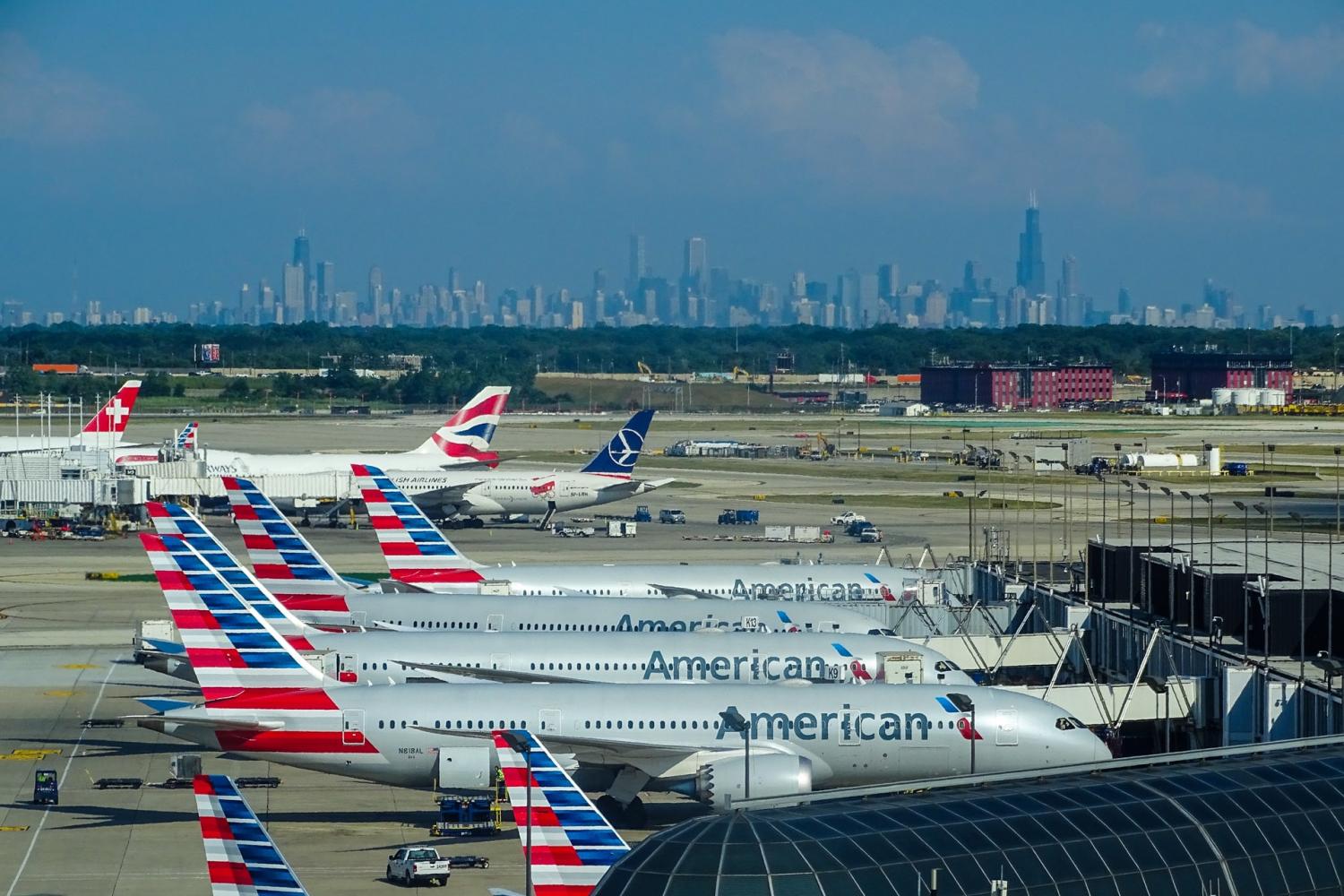
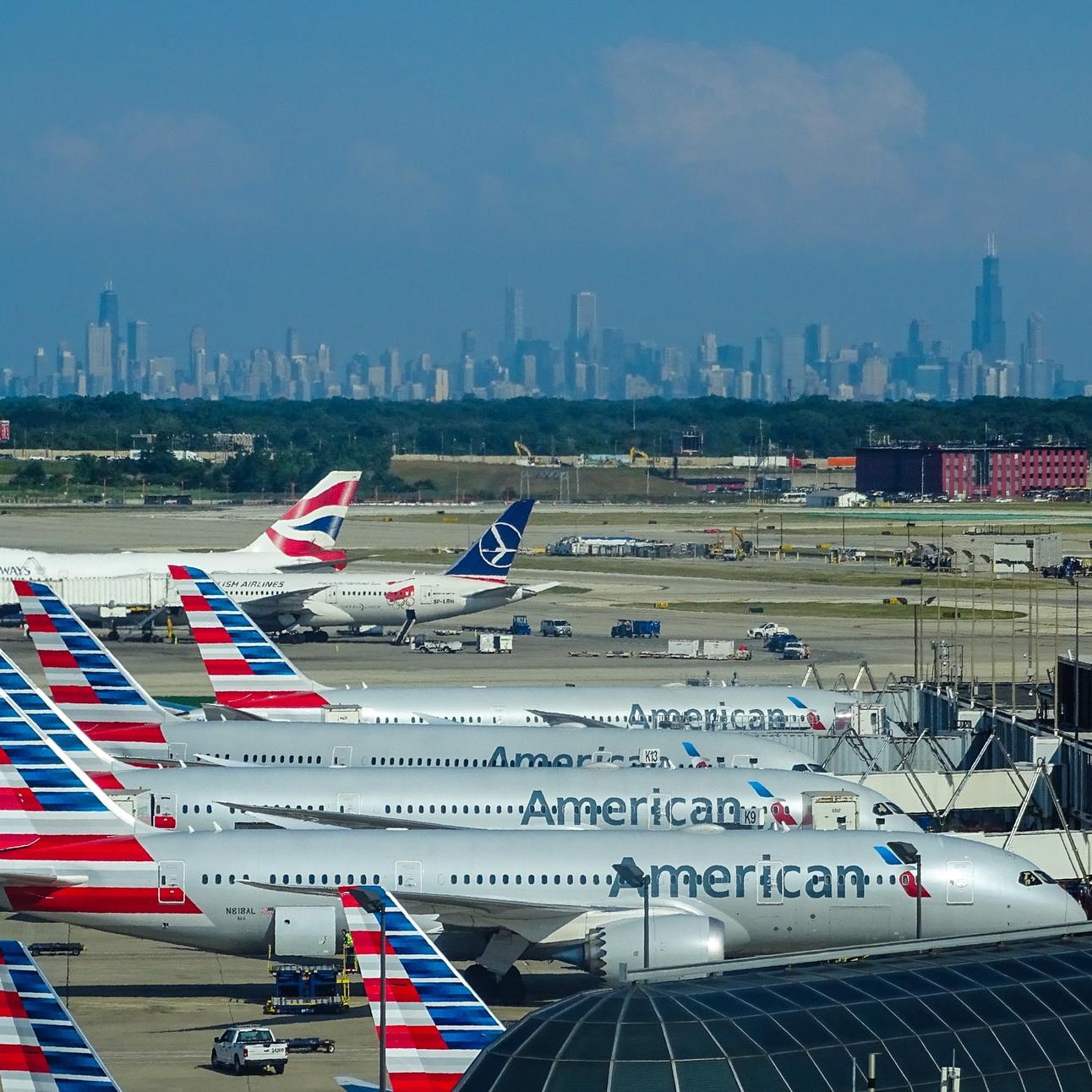
Among the indignities Black Americans endure on a daily basis, #FlyingWhileBlack is becoming increasingly documented. Whether it's white passengers being accommodated because they didn’t want to sit next to a Black kid, or Black doctors snubbed during airplane emergencies, the hashtag has ebbed and flowed on Twitter for countless reasons. Just last month, one airline was accused of kicking a passenger off a flight for wearing a Black Lives Matter T-shirt.
And while U.S. air carriers have a longstanding reputation for not quite listening to their passengers’ concerns, there is more evidence that they are beginning to respond — and not just over mask requirements or change fees. Black travelers have made it clear they should be able to be themselves, and express themselves, however they wish while they are in flight. Despite the relentless pressure of “cancel culture” flaring up on social media, two airlines in particular have shown U.S. companies examples of how to stand up for the Black Lives Matter movement.
American Airlines, which only a month ago was accused of removing Arlinda Johns from a flight for wearing a Black Lives matter T-shirt, made a small gesture by allowing employees to wear Black Lives Matter pins designed by its Black employees group. But without even trying, the airline also launched a gift that keeps giving by exposing the hypocrisy of people who are quick to scream “cancel culture,” only now to find themselves crying out to cancel American Airlines.
In a widely reported public statement, an airline spokeswoman, Sarah Jantz, explained: “Fundamentally, we believe Black Lives Matter is an expression of equality, not a political statement. It doesn’t mean other lives don’t matter, rather that in our society Black lives should matter and be valued the same as others.”
The airline says it also supports employees sporting pins that identify them as or show allyship with groups such as Christians, LGBTQ people and veterans.
Naturally, the backlash on Twitter was fast. One of the standout examples was a tweet describing American Airlines, which made $1.2 billion in baggage fees during 2018, as supporting a “dangerous, anti-American Marxists [sic] organization.”
Others responded in kind, with comments such as, “You weren’t flying anywhere anyway, so now there’s more room up without you racists.”
The debate over how much a pin can really add to the Black Lives Matter movement aside, this episode is a small step forward for American Airlines. Just a few years ago, the company was the target of a travel advisory from the NAACP after a slew of stories alleging discriminatory treatment toward Black passengers.
American Airlines isn’t the only carrier appearing to increasingly back its words with deeds. In a recent Facebook post, a Delta Air Lines passenger, Demetria Poe, described an ugly incident she had on board a flight from Minneapolis to Washington, D.C. to join the recent Commitment March. After the incident, in which she says she was the target of an unsolicited “Blue Lives Matter” rant by a passenger seated next to her, the airline informed her that her seatmate was on a no-fly list, she was upgraded on her return flight, and she scored a bag of Delta swag that included a Black Lives Matter pin.
In the years after 9/11, airlines have often had a more adversarial than constructive relationship with their passengers. Five years ago, it's doubtful these two aforementioned stories would have had similar endings. Today, they show that perhaps corporate America is starting to listen after all and can move the needle on human rights further than this current administration in the White House.
Sign up for the weekly Brands Taking Stands newsletter, which arrives in your inbox every Wednesday.
Image credit: Miguel Ángel Sanz/Unsplash
COVID-19 Offers the Healthcare Sector an Opportunity to Address Racial Disparities — and Reclaim Trust


(The COVID-19 pandemic creates an opportunity for the healthcare sector to address longstanding racial disparities and begin to rebuild trust in historically underserved communities, experts say.)
The novel coronavirus has proven not to be the great equalizer some initially thought. Research indicates vulnerable communities including seniors, LGBTQ+ people, people of color, and women and girls continue to face undue burdens from the pandemic. Nationally, Black Americans have died from COVID-19 at more than twice the rate of white Americans. In 42 states and Washington, D.C., Hispanic and Latinx people make up a greater share of confirmed cases than their share of the population, and states with significant Native American populations report disproportionately higher positive cases within Native communities.
For those familiar with racial and social justice challenges within the healthcare sector, this comes as no surprise. Centuries of systemic racism has led to disparities in access, research and treatment, ultimately contributing to poorer overall health among Black, Brown and Indigenous communities, many of whom harbor deep-set distrust in healthcare systems as a result.
As the world locks arms in the fight against the pandemic — and the Black Lives Matter movement draws renewed attention to systemic inequalities of all kinds — the U.S. healthcare industry has an opportunity to respond like never before. The healthcare sector has a responsibility to address the longstanding racial disparities highlighted by COVID-19 and ongoing conversations around social justice. In doing so, healthcare companies, insurers and providers can begin to reestablish trust within historically underserved communities and publicly commit themselves to a system that serves everyone equally.
“The moment we’re in creates a positive perfect storm with the potential to fast-track change,” said Ilze Melngailis, senior director of the Business Council for the U.N. and Private Sector Engagement at the U.N. Foundation “You have the momentum of the Universal Health Coverage declaration which all 193 U.N. member states signed in 2019, including the U.S., signaling a global commitment to deliver quality health care equitably to all of the world’s citizens. Add to that the spotlight on painful disparities here at home this year, and prominent leaders from business, civil society and local government taking bold new stands against inequality, you have the potential for a transformative race to the top."
Unraveling generational distrust
“Healthcare is something everyone needs but not everyone has access to. Compounded with that, there’s a deep level of distrust,” said Darren Martin Jr., CEO of Bold Culture, a communications firm focused on multicultural marketing.
Studies of U.S. patient outcomes show that people of color, particularly Black people, receive less care across income levels. As such, they are less likely to report trust in healthcare systems and more likely to forgo regular visits to a physician. For some, avoiding the doctor is a behavior passed down through generations, based on historical disparities and negative experiences of the past.
“Some innately feel [visiting a physician] is not something they have a positive or storied experience with, because they haven’t had access to proper care or may have seen their family’s own relationship with healthcare as negative or non-existent,” Martin said. “Companies need to recognize there is a gap and take immediate and long-term steps to improve that. You’re really reshaping generational mistrust, which is a large feat.”
Distrust exists for a reason: Racial disparities across the healthcare sector
Black Americans are three times more likely to die of asthma and 25 percent more likely to die of cancer compared to their white counterparts. Studies show that Black patients are also far less likely to be treated adequately for pain: According to one widely cited survey, half of responding white medical students and residents thought Black patients’ skin was “thicker” and their nerve endings “less sensitive” than that of white patients, highlighting the need for better training of providers to root out systemic biases.
And after decades of using Black bodies for medical research — often without consent, such as in the infamous Tuskegee syphilis experiment, in which Black men were forcibly exposed to syphilis and denied treatment — medical trials now chronically underrepresent Black people. In a 2018 analysis, ProPublica found that in trials for 24 of the 31 cancer drugs approved in the past three years, less than 5 percent of the subjects were Black. Similar patterns can be found in heart health, asthma therapy and, more recently, COVID-19 clinical trials.
In terms of access, Black Americans are nearly twice as likely to be uninsured compared to white Americans.
These inequalities add up to poorer health outcomes, more negative perception of the system and more distrust. “When we say ‘historical disparities,’ we think of something that’s already happened and we’re looking to develop reparations for, but this is still happening,” Martin told us.
Maternal health: ‘One of the most poignant and unacceptable health disparities’
Despite the gains made in reducing maternal mortality around the world, rates in the U.S. are actually increasing — and danger for U.S. mothers rises further along racial lines.
Black, Native American, and Alaska Native women are two to three times more likely to die from pregnancy-related causes than white women, according to the U.S. Centers for Disease Control and Prevention (CDC). These racial disparities increase further for mothers over the age of 30 and are even higher in U.S. cities like New York and Washington, D.C.
“It is one of the most poignant and unacceptable health disparities … and it can be fixed,” said Melngailis of the Business Council for the U.N. “We know how to prevent maternal mortality — it's not a medical challenge. It's a social and an access challenge, and one requiring leadership.”
For those with little access to healthcare, a single experience of feeling unseen or unheard by medical providers can catalyze a lifetime distrust of the system, said Carmen Villar, vice president of Social Business Innovation at Merck.
“If mothers have a poor experience, immediately that kills the trust and their view of the system, and it can prevent them from ever returning,” Villar told us. “We also know that in the U.S. and in many cultures, women are often making decisions for the family about health care. If a mom has a bad experience, she may not bring her family back to receive care, because she doesn’t want them to be disrespected.”
Merck for Mothers, part of Merck’s Social Business Innovation portfolio, was established in 2011 to address maternal healthcare disparities and improve outcomes for mothers. It’s a concrete example of ways in which a healthcare company can identify an area where the system is failing and take meaningful steps to move the needle in the opposite direction, Melngailis said.
Along with Kenya, Nigeria and India, the U.S. is a key focus area for Merck for Mothers. Its Safer Childbirth Cities initiative supports community-based organizations in U.S. cities with high maternal mortality rates, with the aim of reversing these trends.
Having launched in 2018 in 10 cities, including Atlanta, New Orleans and Philadelphia, the initiative plans to expand to 10 more cities this year. “The focus is quality of care and respect for women,” Villar said. “This is important, because without this kind of community engagement on the front lines, you don't have trust.”
Meeting the moment: An opportunity to rebuild trust
The COVID-19 pandemic has laid healthcare racial disparities bare, and the resurgence of the Black Lives Matter movement following the murders of Ahmaud Arbery, Breonna Taylor and George Floyd, to name just a few, only serve to amplify the conversation. The meeting of these moments offers challenges, but also opportunities for healthcare systems to address their historical shortcomings and begin to do better.
“This is a great time for healthcare companies to reach out to the community,” Martin said. Leaning on his expertise in communicating authentically with multicultural communities, he suggested a three-point plan for short-term action.
First, support Black healthcare providers: Though studies show Black patients’ outcomes improve when they see Black doctors, only 4 percent of practicing U.S. physicians are Black. Next, help to finance the community-based organizations that are already doing the hard work to address systemic inequalities in the communities you serve. And, finally, ensure your staff is educating themselves about diverse cultural experiences on a regular basis, “not a one-off, but something that happens every month or two,” Martin said.
“It will take some time,” he told us. "Many industries, healthcare included, want to get things done immediately. They want to say they solved the problem. And it’s just not possible. We're talking about decades and centuries worth of distrust and systemic barriers that need to be uprooted. The industry is going to have to put in a sustained effort around reshaping its commitment to diverse communities.”
As the race for a COVID-19 vaccine continues, the healthcare sector is challenged to be mindful of critical gaps and make certain that historically underserved communities are not left behind. It won’t be easy. In these times of extreme nationalism, there may be resistance to making a vaccine universal, and given generations of distrust, it will take work to ensure that when a vaccine is available, people of all backgrounds are ready and willing to take advantage of it. Only by embracing its responsibility to care for all equally will the healthcare sector truly begin to deliver on its potential. Lives are at stake, and the time to act is now.
This article series is sponsored by GCI Health and produced by the TriplePundit editorial team.
Image credit: Matheus Ferrero/Unsplash
Investments in Water Infrastructure Are Crucial for Long-Term Resilience


Photo: the Rio Grande separating Mexico and Texas, and a region where many communities are held back by a lack of investment in water infrastructure
In Texas, we’re getting some much-needed rain. But as with everything in Texas, nothing is done in half-measures. We’ve been in a drought and typically September brings hurricanes to the coast and flooding inland. These trends have been increasing in intensity for the past few years in Texas and across the country as climate change progresses. The more intense booms and busts of weather events are putting stress on water infrastructure, particularly the parts that get clean water to our homes and businesses.
But climate change is not the only danger. Our water infrastructure is old and crumbling. The exploding populations in our cities coupled with increased treatment requirements is making a bad situation worse.
In its most recent report card, the American Society of Civil Engineers (ASCE) rated the U.S. drinking water infrastructure a “D” and wastewater a “D+”. Now, in a new report, Bridging the Water Gap, ASCE has outlined the costs to the economy if the investment gap in water infrastructure is not closed. Predictably, the costs are high.
What the report says about water infrastructure
ASCE says that between 2012 and 2018, the rate of water main breaks increased by 27 percent, which is an average of a break every two minutes. Further, when pipes break, the utility cannot sell the non-revenue water and must take a loss. These losses equal about 6 billion gallons of treated water per day—in 2019 alone, these losses amounted to $7.6 billion. Water utilities, often already operating on thin margins, struggle with the added financial pressure of patching infrastructure while losing revenue. To compound the situation, most of the systems were built using models and projections that are now out of date because of climate change.
According to the report, to meet increasing demands while the infrastructure is undergoing continued stress, the U.S. needs to invest $109 billion per year over the next twenty years. If not, it warns, the results to the U.S. economic will be severe. In addition to increasing household and municipal costs, many economic sectors will suffer. Electric power and agriculture, both inextricably linked to access to water, will compete with for limited water resources. But perhaps surprisingly, the most water-intensive industry is paint manufacturing, requiring 123 gallons per dollar of output. Many water-reliant businesses will likely face significant disruptions to operations, including retail, hospitality, data, and construction.
Marginalized communities suffer the most when we overlook water investments
While businesses, particularly manufacturing and service, will feel the bite of failing water infrastructure, it is important to remember the employees who work in those sectors. Communities of color and low-income communities typically suffer more from failing water infrastructure. Currently, more than two million Americans do not have access to adequate drinking water and sanitation.
In some areas of the country, the impact is severe. The study references another report, Closing the Water Access Gap, by the U.S. Water Alliance and Dig Deep. It highlights communities that still lack adequate access to water. One area highlighted are the colonias, unincorporated areas in the U.S. along the 1,248-mile Texas-Mexico border that lack infrastructure such as water and sewage systems, electricity and paved roads. Roughly 840,000 people live in the nearly 2,300 colonias. The median income is $29,928, compared to the U.S. median income of $52,762, and the majority of residents are U.S.-born.
The water issue is twofold in these communities: water stress and water access. Most people along the border get their water from the Rio Grande River, a river already drying from the effects of climate change and increasing demand. Add to that fact that most residents of colonias do not have access to safe, affordable water. In one colonia in El Paso, households are using on average 50-100 gallons of water per month per household, compared to the national average of 88 gallons per day. Further, people must collect or purchase water from wells or trucked water, which can add up to $250 per month. All during a pandemic and an economic crunch with Latinx citizens having the highest unemployment rates of all ethnic groups for the first time in history.
Improving water infrastructure must include fixing broken pipes, but it also must include installing and maintaining adequate infrastructure in marginalized communities. Closing the water infrastructure investment gap can empower economic development. By not closing the gap, we risk businesses becoming less competitive, household costs increasing, and greater public health risks. Climate change makes the problem worse, but investment can help even the odds.
Image credit: PxHere
A Labor Day Reminder: 5 NGOs Looking Out for Workers Who Are Most Vulnerable


We’ve decided to take today, Labor Day, off, but not everyone has that luxury. To that end, we’re listing some NGOs that are looking out for those workers here in the U.S. who have the least protections and are the most vulnerable. At a minimum, social media love will never hurt; financial contributions are definitely appreciated.
Coalition of Immokalee Workers: Florida has become one of the most stubborn hotspots during the COVID-19 pandemic, and Collier County was one of the worst hit regions. Workers in the farming community of Immokalee have been particularly hit hard: this coalition is urging that Florida officials take far bolder action before the fall harvest season. CIW is also partnering with the Fair Food Program so that these workers, who have almost zero protection, can score far more equitable labor rights.
National Domestic Workers Alliance: We’ve covered this nonprofit in the past, and for good reason. Many of the people who ensure we can live our lives in comfort are also at most risk during a sudden economic downturn, whether they babysit our kids or clean our homes. Among its many directives, this coalition has also tasked itself by doing what it can to slow the spread of COVID-19 by providing emergency assistance for domestic workers during this ongoing crisis.
No Us Without You: This Los Angeles-based nonprofit focuses on food security for undocumented hospitality workers and their families. These workers are the backbone of the hospitality industry, and many have become unemployed due to the COVID-19 pandemic - yet they are not eligible for unemployment benefits even though they had been taxed every paycheck.
One Fair Wage: This is one of many organizations that believes it’s time to rethink the way in which the restaurant industry pays employees – a system that has its origins in slavery. The coalition is pushing New York’s restaurant industry to pay its workers a fair, living wage – one that isn’t based on tips. It's a fine example of how we can honor the ideals that led to Labor Day here in the U.S.
RAICES: No, the crisis along the Texas-Mexico border hasn’t gone away, it’s just that other news has resulted in a new set of headlines. This agency works with attorneys, around the clock, and surely today on Labor Day, to provide free or low-cost legal assistance to immigrant refugees, families and children who fled one nightmare only to land in another one here in the U.S.
Sign up for the weekly Brands Taking Stands newsletter, which arrives in your inbox every Wednesday.
Image credit: Unsplash
4 Reasons Why Companies Should Embrace the Kigali Amendment
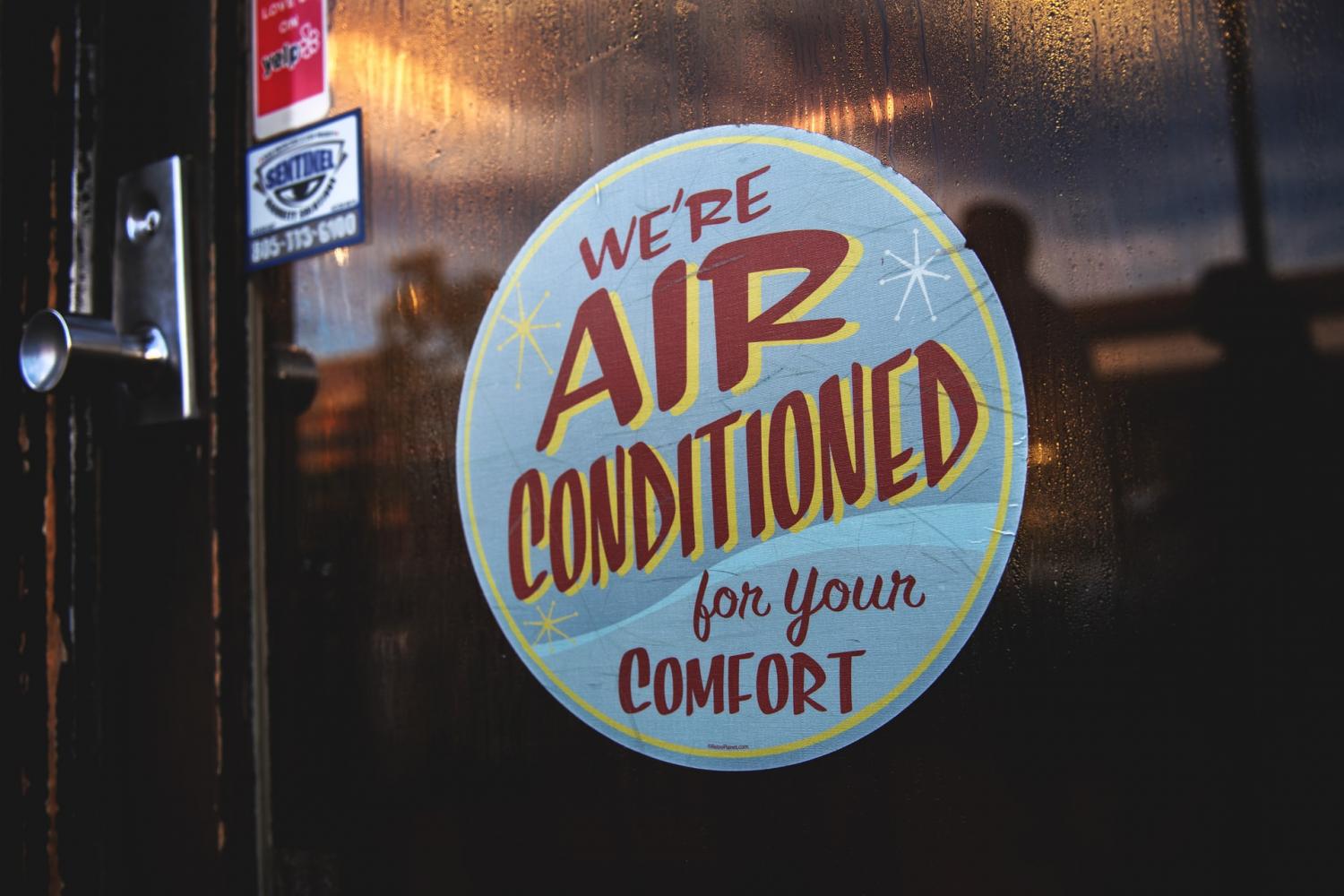
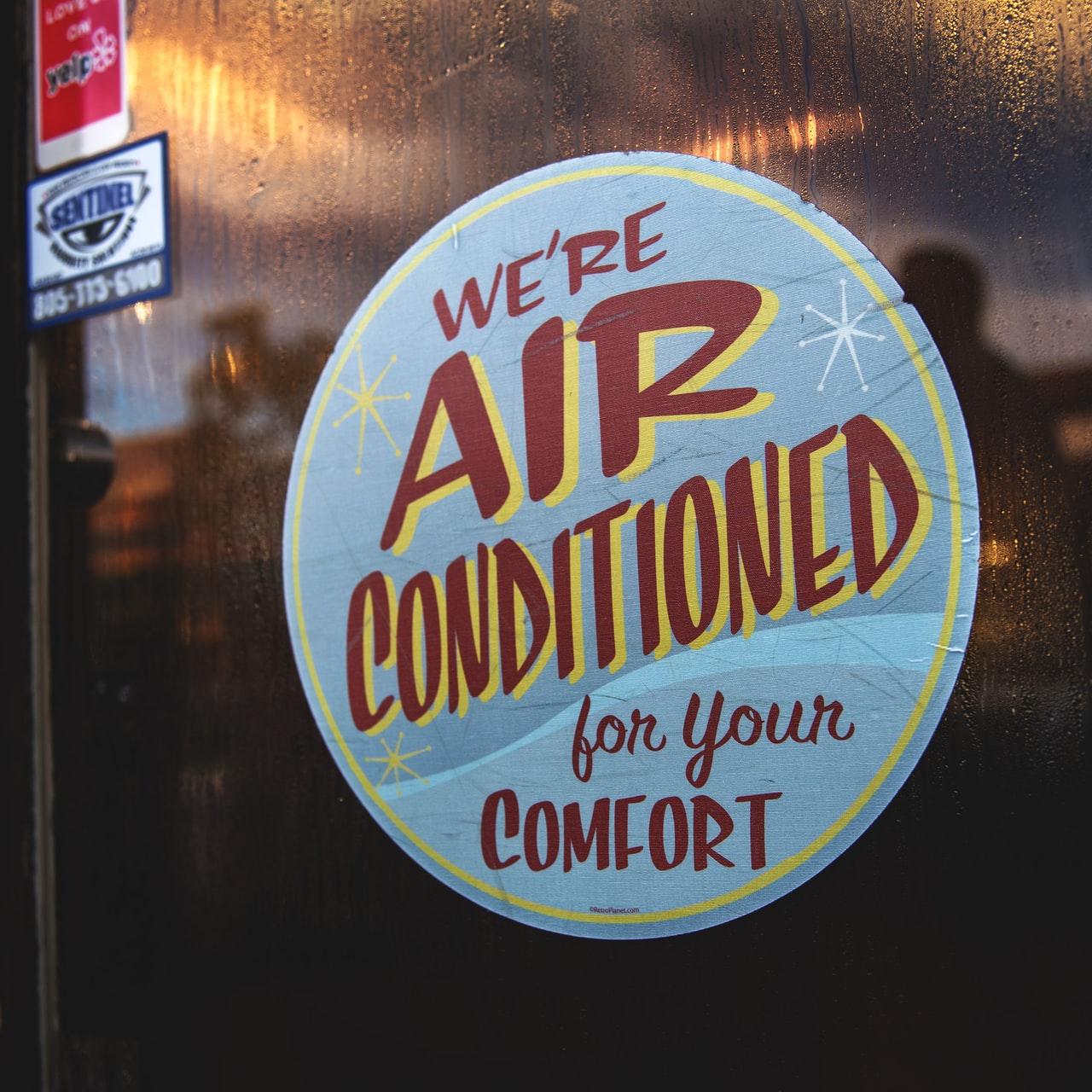
When you think of climate change and earth’s depleting ozone layer, you may associate it with carbon dioxide (CO2). But the hydrofluorocarbons (HFCs) lurking in our atmosphere are by many estimates more than 100 times more potent than CO2. One addition to the Montreal Protocol, the Kigali Amendment, came into effect January 2019 with the goal to gradually phase out HFCs in the next 30 years. The majority of cooling appliances, including refrigerators and vehicle air conditioning systems, use HFCs, which can percolate during these items’ production and repairs, if they are not disposed properly.
Prolonged and unusual heat waves and thunderstorms increase demand for products in the HVAC (heating, ventilation and air conditioning) industry. This demand is spiking global electricity usage, which is expected to make up nearly a quarter of global electricity consumption by 2050.
The Kigali Amendment is estimated to prevent a 0.4 degree Celsius rise in global temperature by 2100 while protecting the earth’s ozone layer. The first phaseout was expected by developed countries like the U.S in 2019, followed by a freeze by such countries like China and finally, a reduction by all remaining countries by 2028.
If greenhouse gas emissions are not reduced by 2050, temperatures are expected to increase by at least 5 degrees in the U.S. This can result in catastrophic effects on people, the environment and businesses.
Companies and their industries must take the Kigali Amendment seriously. Here’s why:
Opportunities to lead in new markets
The Kigali Amendment one part of the global effort to tackle climate change and industries are already moving towards achieving the United Nations’ sustainable development goals (SDGs).
Turbulent weather will undoubtedly damage infrastructure, factories, alter transportation and affect the production and cost of materials. As products using HFCs are phased out, global companies will compete to become pioneers of clean, efficient and innovative technologies that can either replace HFCs products or reduce their damage.
The global HVAC industry is expected to more than double in the next decade creating new markets of opportunity. To that end, the Air-Conditioning, Heating and Refrigeration Institute pledged $5 billion from 2015 to 2025 for research, development and investment toward Kigali-friendly products.
Creating sustainable, impactful and socially responsible jobs
In the southern U.S., extreme weather is expected to reduce economic productivity by 3 percent and result in up to $160 billion worth of lost wages. By adhering to the Kigali Amendment, businesses and entrepreneurs can tap into new, eco-friendly and energy consumption industries while creating sustainable, impactful and socially responsible jobs. In fact, U.S implementation of the amendment is estimated to create 33,000 direct jobs and 117,000 indirect new jobs. This amendment hence offers an opportunity to rethink the HVAC industry, employment and global economic growth.
Rising global temperatures disrupt agriculture, health and environmental wellness
Extreme weather has ramifications for not only a country’s economic growth but also its infrastructure, citizens’ health, and environmental wellness. It is estimated that global cooling-related greenhouse gas emissions will increase as much as 15 percent by mid-century. The resulting risks could disrupt wildlife, drown or reduce crops, overwhelm flood infrastructure and have a huge effect on people's health. These rising temperatures also will drive demand for electricity. If industries can pivot, redesign and tackle rising global temperature, its solutions would be monumental and sustainable in the future.
The Kigali amendment can burnish brand reputation
Coming up with solutions to one of the most pressing global issues of today is exciting and empowering. To achieve the Kigali Amendment’s goals, new products and technologies could become a vibrant part of global trade. Participating research and development organizations, businesses and thought leaders will achieve brand recognition for their contributions.
And it’s already happening. One startup, and finalist of the Global Cooling Prize contest, Transaera, is developing affordable and energy efficient cooling systems. Another startup, SkyCool Systems, sees potential in the development of rooftop cooling mirrors.
The Kigali Amendment is challenging us to rethink the technology on which we are dependent. A directive that can result in new jobs, improved technology and the securing of health and environmental wellness is the direction we must move towards. If acted upon immediately, this amendment can halt the catastrophic environmental predictions and create prosperous, sustainable businesses. It’s a win-win for the planet and our economy.
Image credit: Tim Mossholder/Unsplash
The 5 Most Important Ethical Issues Facing Tech


Tech workers are building the future. With that power comes a responsibility to build a future that is more free, just, and more prosperous than the present. Many tech workers are taking that responsibility seriously.
For example, since 2018, employees at Google, Facebook, and Amazon have publicly protested their companies' behavior on ethical grounds.
It’s essential that we understand what’s at stake when it comes to who we work for and what we build. Below are five areas within technology that represent forks in the road. Each of them holds tremendous possibility. Some are helping to usher in a better future. But all of them have the potential to hasten dystopia. Here's a brief summary of each of these areas and why they matter.
Mass surveillance
In a nutshell: Private companies including social media sites and cellular phone service providers are collecting vast troves of detailed, real-time location and communication metadata and selling it to and sharing it with law enforcement, immigration enforcement, and the intelligence community without informing users.
What may be at stake: Surveillance by immigration enforcement is literally a matter of life and death. Law enforcement’s use of surveillance technology to identify and track protestors and journalists threatens First Amendment rights. Amazon Ring and other surveillance tools can present risks that police could escalate responses to protestors to the point at which violence can result.
Where to learn more: The Intercept and 20 Minutes into the Future are starting points for sources of surveillance reporting. Be sure to follow these five leaders on tethics (tech ethics); one listee, Eva Gaperin, updates an excellent Twitter feed that provides constant updates on surveillance. And be sure to check out our this post on the pros and cons of employee surveillance.
Be aware of deepfakes
In a nutshell: In April, State Farm debuted a widely discussed TV commercial that appeared to show an ESPN analyst making shockingly accurate predictions about the year 2020 in 1998. It was a deepfake - a disturbing trend that is occurring within media worldwide.
Deepfakes are media representations of people saying and doing things they didn’t actually say or do. To make a deepfake, someone records a photo, audio clip, or video of someone and then swaps out his or her likeness for another person's.
What may be at stake: Detecting deepfakes is one of the most important challenges ahead of us. Examples of deepfakes in include a video in which Belgium’s Prime Minister Sophie Wilmès links COVID-19 to climate change. In one particularly frightening example, rumors that a video of the president of a small African country was a deepfake helped instigate a failed coup. On the other hand, brands are using deepfakes for marketing and advertising to positive effect. Other positive uses include creating “voice skins” for gamers who want realistic-sounding voices that aren’t their own.
Where to learn more about these tech challenges: This synopsis by MIT and this CSO intro both do a good strong job covering how deepfakes are made and the risks they impose. The Brookings Institution offers a good summary of the potential political and social dangers of deepfakes. Further, this guide, in addition to additional work on Forbes, are good primers on how advanced deepfake technology is - along with its potential to become even more sophisticated. Finally, the videos embedded in this CNN analysis can help those interested in this challenge can get up to speed.
Stay vigilant on disinformation
In a nutshell: A play on the word “misinformation,” disinformation is a type of propaganda meant to mislead or misdirect a rival. For example, a 2019 Senate Select Committee on Intelligence (SSCI) report confirmed that Russian-backed online disinformation campaigns exploited systemic racism to support Donald Trump’s candidacy in the 2016 election.
What may be at stake: When disinformation from Chinese and Russian-backed groups is distributed online, it can have real-world consequences. Between 2015 and 2017 Russian operatives posing as Americans successfully organized in-person rallies and demonstrations using Facebook. In one instance, Muslim civil rights activists counter-protested anti-Muslim Texas secessionists in Houston who waved Confederate flags and held “White Lives Matter” banners. Russian disinformation operatives organized both rallies. Experts predict more Russian-backed disinformation in the run-up to the 2020 elections.
Where to learn more: Dan Harvey’s “20 Minutes into the Future” is among the leading newsletters on this topic, and his most recent edition is a quick read on the recent developments in Russian disinformation. In it, he recommends this analysis of Internet Research Agency (IRA) campaigns put together by Oxford University. The Axios Codebook newsletter is also insightful, and its June edition on Russian disinformation disinformation is an especially compelling resource. For a thorough-but-readable long read, I recommend DiResta’s The Digital Maginot Line. For a more academic analysis, check out Stanford University’s Internet Observatory.
Be wary of addictive user experience
In a nutshell: Product managers, designers, tech marketers and start-up founders are all trying to build tools that users can’t put down. The benefits of addictive technology is obvious for the builders. But what is the long-term impact on users?
What may be at stake: Habit-forming tech products aren’t bad in and of themselves. But not all habits turn out to be healthy. Multiple studies have linked social media use with anxiety and depression, although the causal relationship isn’t clear. After the fintech company Robinhood made it free, easy, and fast to trade individual stocks, some users developed an unhealthy relationship with trading. One 20-year-old user committed suicide after seeing his $730,000 negative balance.
Arguably, no app is more addictive than TikTok. As a Chinese company, TikTok owner, ByteDance, is required to pass user data to the Chinese government. And going back to the disinformation section, TikTok has little incentive to resist pressure to display content that gives China an advantage over the US. In 2019 Senator Josh Hawley introduced ham-fisted legislation aimed at combating any addictive user experiences.
Where to learn more: This Scientific American piece is a good overview of the research on social media’s impact on mental health. The Margins newsletter is a good source of information on the pros and cons of technology and its Robinhood edition is a worthwhile read. Ben Thompson’s Stratechery newsletter is nuts-and-bolts, but delves into useful analysis of the ethical implications of technology.
Racist AI can reflect our own biases
In a nutshell: Artificial intelligence (AI) is only as good as the data it’s on which it’s based. Since humans still, by and large, exhibit racial biases it makes sense that the data we produce and use to train our AI is also going to contain racist ideas and language. The fact that Black and Latino Americans are severely underrepresented in positions of leadership at influential technology companies exacerbates the problem. Tech workers are only 3.1 percent are Black nationwide. Silicon Valley companies lag on diversity, as only 3 percent their total workforce is Black. Finally, only 1 percent of tech entrepreneurs in Silicon Valley are Black.
What may be at stake: After Nextdoor moderators found themselves in hot water for deleting Black Lives Matter content, the company said it would use AI to identify racism on the platform. But racist algorithms are causing harm to Black Americans. Police departments are using facial recognition software they know misidentifies up to 97 percent of Black suspects, leading to false arrests.
The kind of modeling used in predictive policing is also inaccurate, according to researchers. And judges are using algorithms to assist with setting pre-trial bail that assign Black Americans a higher risk of recidivism based on their race. Amazon scrapped its internal recruitment AI once it came to light that it was biased against women. On the other hand, one study showed that a machine learning algorithm led to better hires and lower turnover while increasing diversity among Minneapolis schoolteachers.
Where to learn more: The Partnership on AI, a nonprofit coalition committed to the responsible use of AI, is a great resource to learn more about the challenges within this space. This discussion on algorithms and a November 2019 assessment on the pitfalls of AI are both good valuable as they are short, readable intros to on the topic. Race after Technology is a concise, readable, quotable tome on what author Michelle Alexander calls the New Jim Crow.
Image credit: Michael Aleo/Unsplash
These Multinationals Are Calling for Stronger Legal Protections of Human Rights
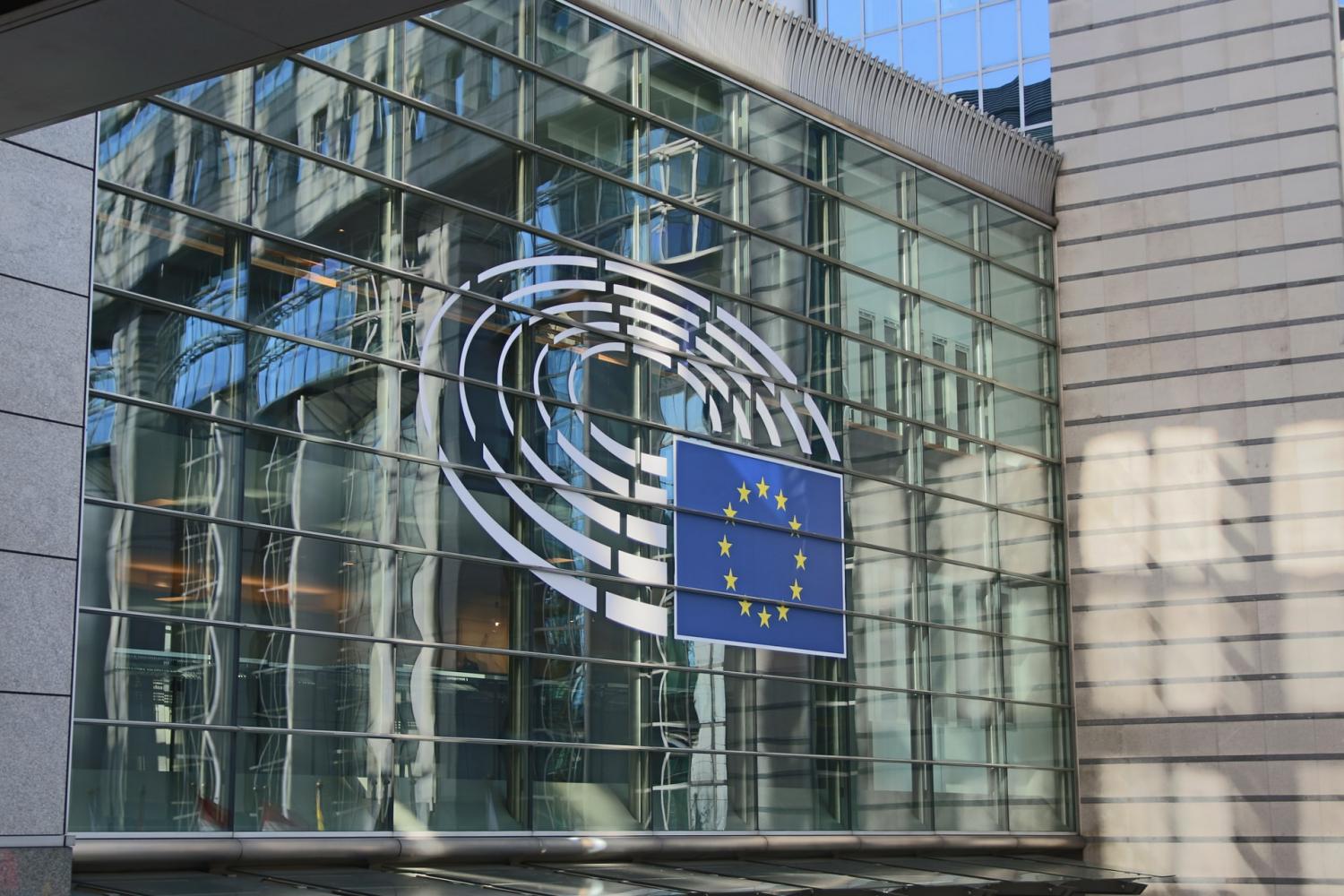
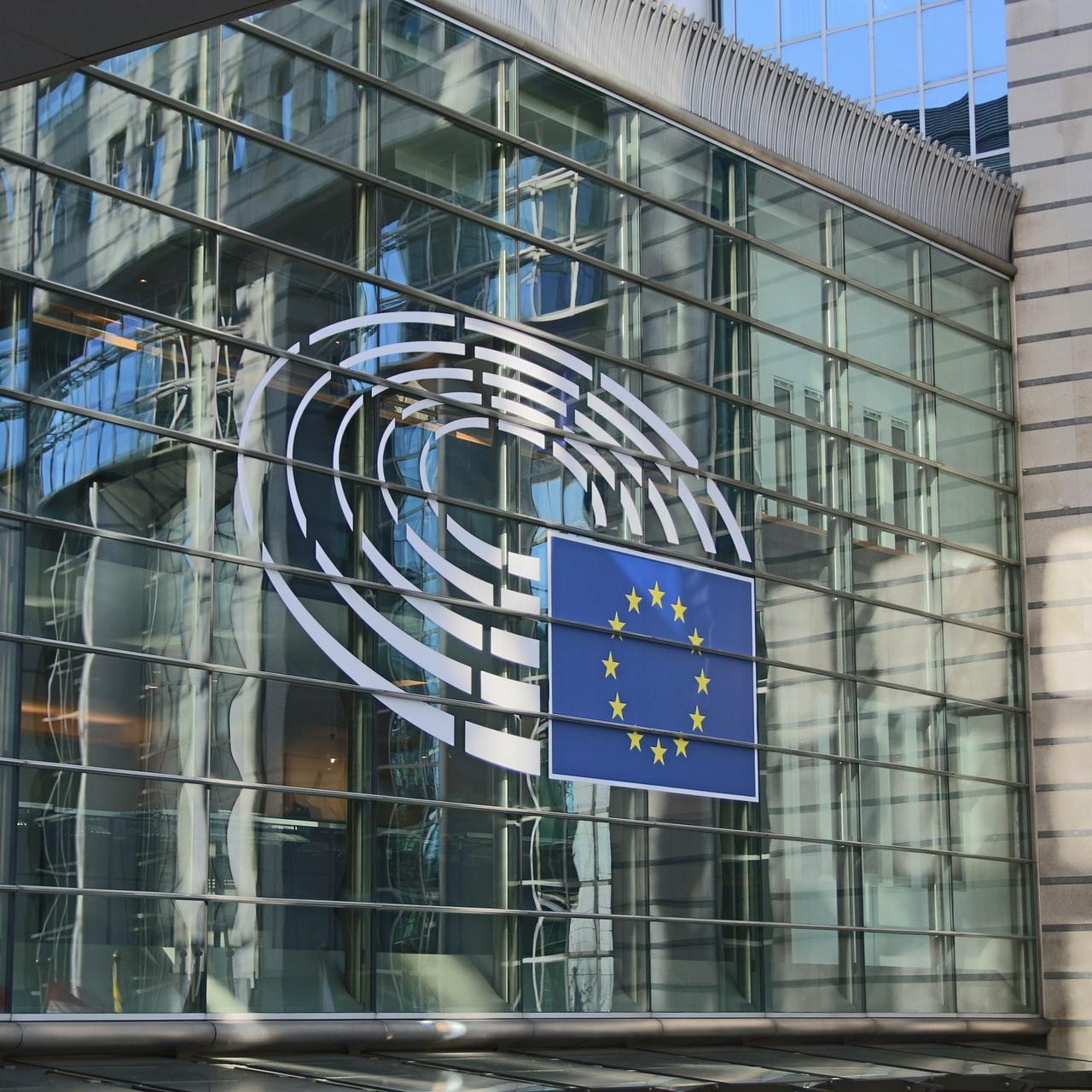
Photo: The European Parliament in Brussels, where the EU is considering legislation that would mandate a “legal duty of care” for human rights and the environment.
There’s no shortage of news covering the impacts that multinational corporations have on human rights, and the stories are generally far from positive. Weak enforcement in poorer nations and the lack of transparency in supply chains are among the reasons why a company can suddenly find itself in public relations hot water or, even worse, a horrific human rights disaster.
One recent study based in Mexico concluded that, overall, multinationals have a better track record respecting human rights than locally-based firms, but problems can still fester. In recent years, apparel companies and electronics manufacturers are among the industries that faced scrutiny over how people working within their supply chains were treated.
A new business coalition says it is not only committed to human rights and environmental stewardship (as the two challenges are far more closely related than we may think); it also says companies should be required to take on due diligence by law so that human rights, and the planet’s rights, are respected.
Yesterday, a group of multinationals and trade groups announced its support of legislation in the European Union that would mandate such due diligence. Signatories include some of the usual suspects including Unilever, Tony’s Chocolonely and The Body Shop. But this list also boasts brands including H&M, Inditex (which owns Zara), Mars and Modelez.
It’s true that many companies have adopted standards such as those proposed by their specific industries, or more general frameworks such as the U.N. Guiding Principles on Business and Human Rights (UNGPs). “However, more companies need to take commitments and work to assess, act, and report on their potential and actual impacts on human rights and the environment,” the companies wrote in an open letter.
The cynic could say this is simply companies begging government to regulate them over actions they cannot, or will not, take on with their own initiative. But such a mandate can also protect companies in the long term by raising potential problems that could flare up should they commit to build a factory, line up a huge group of new suppliers or lease new offices in a faraway location. Legislation on this front can also create a more level playing field for businesses, bolster legal certainty and, ultimately, help companies become a more trusted ally of a local community instead of an adversary.
According to the signatory companies, their words are backed with the heft of a combined $415 billion in total market value. More importantly, they point out that this directive is the first remotely international and cross-sectoral business movement that calls for a legal duty of care — in other words, enacting a legal obligation to deploy any and all reasonable action in order to avoid injuring citizens, who often have little recourse to fight back against human rights or environmental violations.
Image credit: Marko Lovric/Pixabay
As More Hotels Close, Some See an Opportunity for Affordable Housing


The hotel industry is hurting. One trade group recently announced data concluding that almost two-thirds of U.S. hotels had occupancy rates mired at 50 percent or lower. Many will never reopen, whether they are roadside inns or luxury hotels in America’s most expensive cities.
It’s difficult finding any silver linings in this pandemic as it nears its seventh month. But in any crisis, there are opportunities. As for hotels, one advantage they present over other properties such as office parks or shopping malls is that they are easy targets for adaptive reuse — if that change means they can be used for the same purpose: providing a roof over someone’s head at night or, even better, for the long term.
The U.S. was already enduring a housing shortage before the pandemic. And with the threat of mass evictions looming, it could become even worse, especially for those who live paycheck-to-paycheck or have lost their jobs as a result of pandemic-related disruptions.
No one wants to see any businesses close. But what if these shuttered hotels, especially the lower- or mid-range priced properties that usually score two or three stars in the travel guides, could be converted into affordable housing? Many already have the infrastructure that renters would like, including an office for administration and security purposes, ample parking, and communal laundry. Then there are the amenities, the “very nice to haves,” such as swimming pools or space for recreation and barbecues. The one heavy lift would be installing the necessary hookups, cabinets and surfaces so residents could have kitchens, but that is still more seamless than building new housing developments from the ground up.
This isn’t just about affordable housing for America’s most vulnerable: These opportunities would also help renew communities and offer cities an opportunity to salvage some lost tax revenues. Such an effort wouldn’t necessarily have to involve the government, either.
One company that is keen on such adaptive reuse is Repvblik, a Los Angeles-based real estate developer that began such a project in Branson, Missouri, over two years ago. The company’s CEO, Richard Rubin, is one of many observers who sees housing costs decreasing over time as renters look to “shop down.” But many renters are still left out of luck even if a $2,500 rental price is slashed in half. In much of the U.S., affordable housing means a price point of well under a grand.
Repvblik’s solution is transforming a hotel that once hosted country music fans who visited Branson’s theaters into what has become a gated community of over 400 one-bedroom and studio apartments. The studios go for just under $500. The one-bedrooms are $200 more. And for those who need furniture, Repvblik is offering options for a modest monthly fee when compared to the costs of going to a rent-to-own outfit. Some benefits of being in a hotel are still apparent — as in, not fussing over the cost of utilities or water. Additional perks include spaces to play sports and, of course, an outdoor pool.
Rubin is also eyeing a similar opportunity in Topeka, Kansas. With organizations including Freddie Mac suggesting that the U.S. could need as many as 3 million new housing units to meet demand, developments like those occurring in Branson are a seamless path toward ensuring more citizens have an affordable place to live.
Image credit: Men Leo/Unsplash
In the Aftermath of the Jacob Blake Shooting, One CEO Sets A High Bar
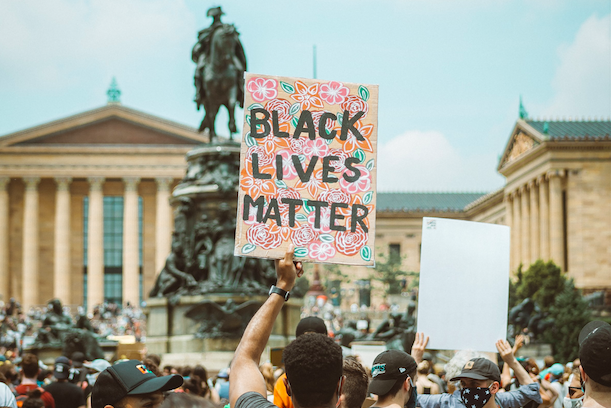
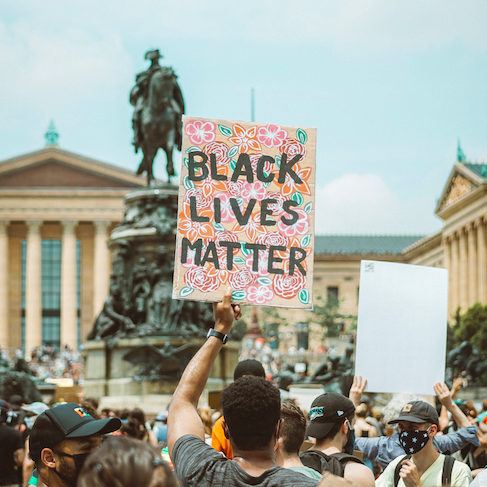
Photo: A Black Lives Matter protest in Philadelphia. Such protests continued after the shooting of Jacob Blake in Kenosha, Wisconsin, on August 23.
Last weekend, as Americans continued to grapple with the shooting of Jacob Blake, the NFL’s Philadelphia Eagles owner, chairman and CEO Jeffrey Lurie did something that every CEO in the U.S. is capable of doing. In a wide-ranging public “State of the Eagles” speech, he argued that Black people in America have been dealing with a lethal pandemic not only during the COVID-19 outbreak this year, but during a 400-year history of oppression, from the state-sanctioned slavery of earlier days to the structural racism of today. By making that point, Lurie provided a much-needed counterbalance to the Donald Trump administration, which has attempted to demonize the Black Lives Matter movement. The question is: Will other business leaders stand up for Black Lives Matter and those who have suffered such as Jacob Blake?
First, admit that structural racism is real, and lethal
Lurie’s speech was posted in full on the Eagles website on August 30. He got straight to the point.
“....Obviously we’re going through two terrible, terrible pandemics,” he said, “One that's existed for the history of our entire country, the pandemic of systemic racism, violence to minorities, oppression, all that kind of activities that have been part of our history, and obviously the once-in-the-last-100-years health pandemic that's been devastating, as well.”
Lurie was not simply venting. He was also drawing a clear roadmap for other CEOs to follow. He argued that accepting the reality of the pain and destruction caused by structural racism, and learning from it, is the only way to make progress.
He appealed to his audience to drop the blinders many continue to wear in the aftermath of the violence that met Jacob Blake and quit pretending that racism ended with the Civil War. And, he was right.
Black people are still being harassed by self-appointed police, murdered by self-appointed police and, in the case of George Floyd and others, murdered by actual uniformed police officers. In the latest such incident, earlier this week a Black man riding a bicycle in Los Angeles was stopped by police for an as-yet defined “bike violation,” an encounter that ended in his death. That presents a sharp contrast with the treatment of non-Black mass murderers like Dylan Roof and Nikolas Cruz, both of whom were apprehended peacefully after their rampages.
Lurie acknowledged the difference in treatment when he appealed to his audience to “take ownership of [the pain] and step aside for a moment and listen and listen and listen.”
“And then try to use the gift of elevation,” he continued, “Which is a human gift, and take ourselves to a higher level of ourselves and try to figure out what we all can do, both as a country, as a city and ourselves and our football team, what can we do to be part of the solution.”
Then, make it personal
Lurie also spent a considerable amount of time urging his audience to stop treating the victims of structural racism as statistics — and take the time to know them as individual people. His advice was simple: Take your attachment to someone you know, either through fame or familiarity, and apply their passing to George Floyd, the violence Jacob Blake encountered, or any number of other victims of structural racism.
“Okay, what if that was Kobe Bryant?” Lurie asked rhetorically, referring to the basketball star who died tragically in a helicopter accident last January. Or what if it was the young, charismatic actor Chadwick Boseman, who succumbed to colon cancer just a few days ago after keeping his diagnosis out of the public eye for four years?
And then, make it about patriotism
Finally, Lurie presented other CEOs with a simple strategy for avoiding the patriotism trap. He did not directly refer to the famous quote, “my country, right or wrong,” but he may have had in mind the more nuanced meaning of the full quote, first attributed to the early 19th-century Naval officer Stephan Decateur. U.S. Sen. Carl Schurz issued a more straightforward version during a speech in 1871 when he said:
"My country, right or wrong; if right, to be kept right; and if wrong, to be set right.”
Lurie has updated that sentiment in a similarly unmistakable way:
“We can all love our country, but to love our country is to own our country, and that's where I really believe strongly that we have to own the good and own the bad, and we won't be able to change the bad until we realize we're responsible for it.”
Next steps for the NFL
There is much more to Lurie’s speech, but the real impact will be felt when the NFL season begins. In the wake of the Jacob Blake shooting, players on the Eagles have been discussing how they will demonstrate their reaction, and they have been sharing their thoughts with their fans through the Eagles official website.
In a team meeting on August 27, safety Rodney McLeod argued that professional athletes have a responsibility to take a stand. “Our brothers and sisters, particularly in the African American community, are being hurt, or being killed, at an alarming rate,” he said. “Another incident has taken place and now we have to take sports and move it to the side and understand and address the situation at hand.”
Moving ahead in the aftermath of the Jacob Blake tragedy
Though NFL leadership had been slow to voice support for the Black Lives Matter movement, by the end of July the league did begin to formulate action steps. The plans include using the end zones during the first week of the season to convey social justice messages such as "It Takes All of Us" and "End Racism.”
Considering all that has happened since July, it seems likely that the Eagles and the NFL will take stronger actions as Opening Day approaches, and their continued support for Black Lives matter should help to defuse the Trump administration’s attempts to foster violence as a campaign strategy. If college football responds in a similar way, the strategy will be further undermined.
Hundreds if not thousands of other U.S. business leaders have the same opportunity to speak up in defense of equal justice, peaceful protest and civil rights, if only they have the courage to do so.
Sign up for the weekly Brands Taking Stands newsletter, which arrives in your inbox every Wednesday.
Image credit: Chris Henry/Unsplash